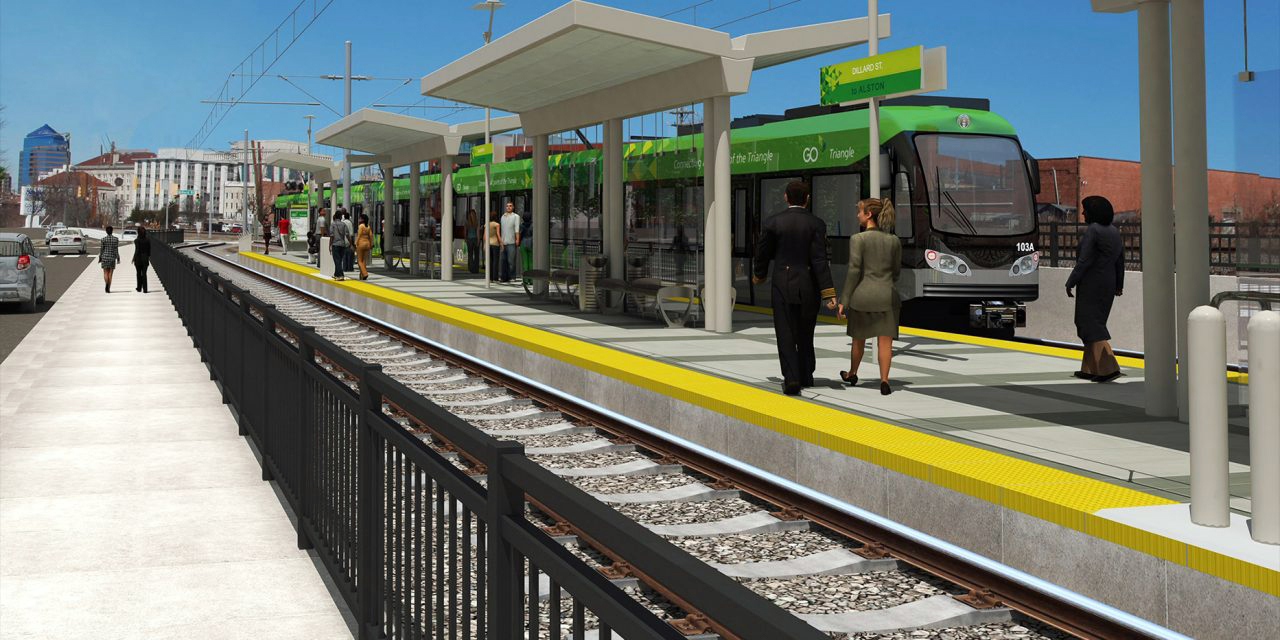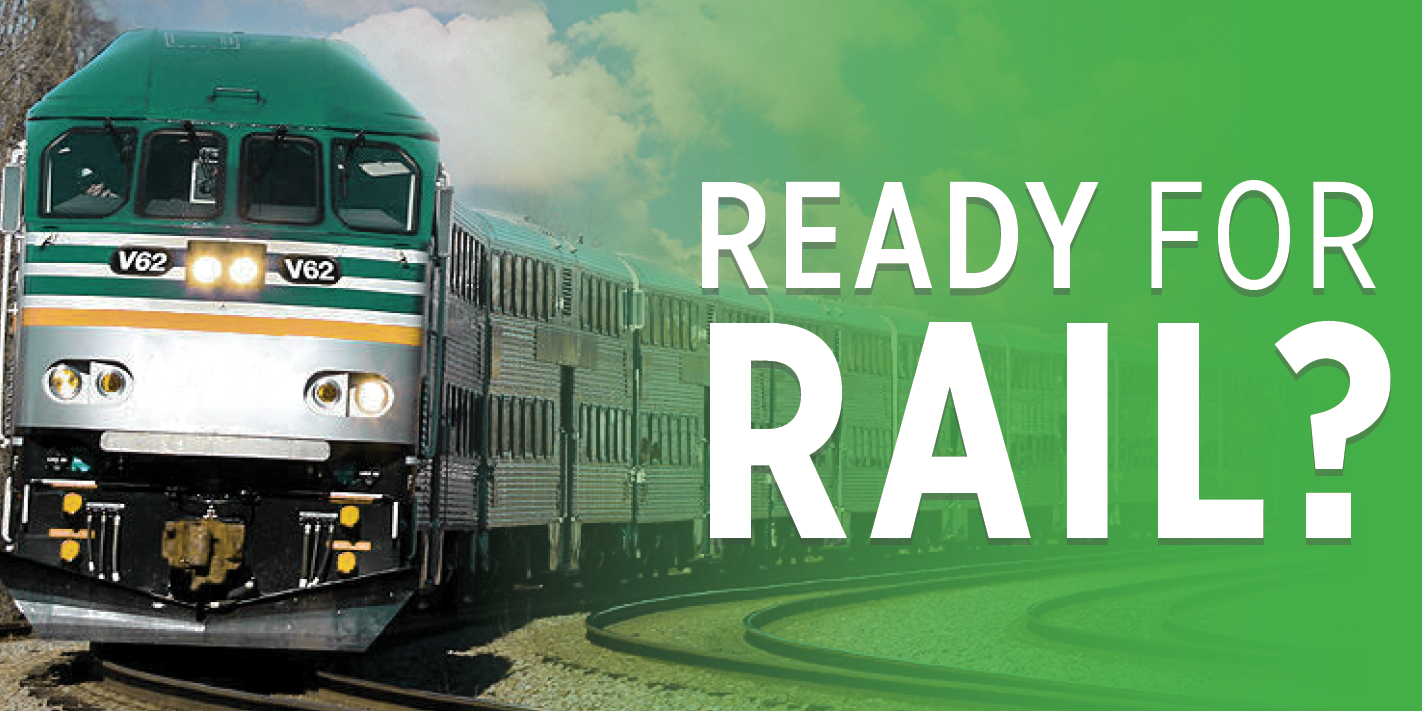READY FOR RAIL? Become A Commuter Rail Insider Today
Wake, Durham, Orange, and Johnston counties collectively add more than 32,000 residents a year, resulting in crowded roads and ever-lengthening commute times. A Triangle commuter rail line between West Durham and Raleigh extending to Garner or Clayton presents an opportunity to manage growth and create a truly regional transit network, which will help us build upon our standing as one of the best places to live in the United States.
The Greater Triangle Commuter Rail Project would provide:
A QUICK AND RELIABLE COMMUTE
Plan a car trip between Durham and Garner, and you can expect to spend between 35 and 60 minutes or more on the road, depending on traffic. No matter how crowded the Triangle’s roads get, commuters will be able to rely on a Triangle rail line to get them to work, school, health care or play in the same amount of time every day. Instead of gripping a steering wheel, commuters can read, work, sleep, check social media and relax.
INCREASED ACCESS AND OPPORTUNITY
 Investing in a Triangle commuter rail line traveling 37 miles or more through major employment areas and connecting to major universities — Duke University and Medical Center, downtown Durham, North Carolina Central University, Research Triangle Park, North Carolina State University, and downtown Raleigh, among others — would significantly increase the geographic range of jobs and educational opportunities for everyone. Commuter rail lines also are more environmentally friendly and offer local governments the opportunity to create affordable housing near station areas for residents who also benefit by spending less money on owning vehicles.
Investing in a Triangle commuter rail line traveling 37 miles or more through major employment areas and connecting to major universities — Duke University and Medical Center, downtown Durham, North Carolina Central University, Research Triangle Park, North Carolina State University, and downtown Raleigh, among others — would significantly increase the geographic range of jobs and educational opportunities for everyone. Commuter rail lines also are more environmentally friendly and offer local governments the opportunity to create affordable housing near station areas for residents who also benefit by spending less money on owning vehicles.
AN ECONOMIC DEVELOPMENT DRIVER
More than 1.3 million people, or 13 percent of North Carolina’s population, already live in Wake, Durham, and Johnston counties. A fixed transit line through the Triangle would give leaders one tool to manage growth by connecting the Triangle’s vibrant downtowns and universities and by offering the opportunity to create new dense, pedestrian-oriented communities that include offices, homes, retail space, parks, grocery stores, and restaurants near new rail stations. Such development can grow the tax base that supports all of our critical public services.
In addition, investing in a high-quality transit network that includes commuter rail and is close to affordable housing would help many Triangle households of modest means.
A recent Triangle J Council of Governments survey found that a majority of residents in Wake, Durham, and Johnston counties spend more than half of their incomes on housing and transportation.
The average household in Durham spends 57 percent of its income on housing and transportation. In Wake County, that percentage is 56 and in Johnston County, it’s 53. Households that spend more than 45 percent of their income on housing, utility, and transportation are considered cost-burdened under most guidelines.
The study also found that 27 percent of the region’s total legally binding affordable housing units are within a mile of the commuter rail corridor. In Durham, 37 percent of the county’s units are within a mile of the rail corridor. In Wake, it’s 25 percent and in Johnston 4 percent.
 There also are many opportunities to build more affordable housing. There are plans for 2,000 new affordable homes in downtown Durham alone. The rail project would help scores of people with modest means reach job centers, the study found.
There also are many opportunities to build more affordable housing. There are plans for 2,000 new affordable homes in downtown Durham alone. The rail project would help scores of people with modest means reach job centers, the study found.
Low- and moderate-income families tend to be more dependent on transit service so making sure there is room for them to live in station areas would increase ridership, making the commuter rail investment even more cost-effective.
Ultimately, public transportation is about you and for you, so your input is critical to planning the commuter rail project. By signing up to become a Commuter Rail Insider you will be certain to receive project updates and get notices when surveys and virtual or public meetings are scheduled.
Visit readyforrailnc.com to learn more about the transformative project and to sign up to be a Commuter Rail Insider.


